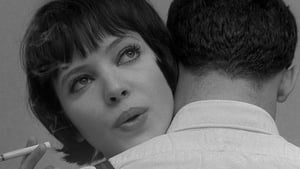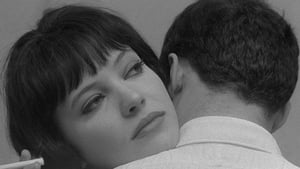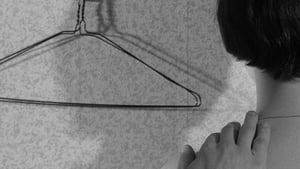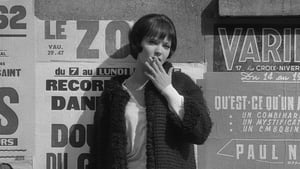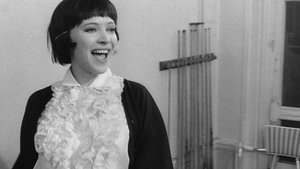Contact: [email protected]
Video Sources 0 Views

Vivre Sa Vie 1962 First Early Colored Films Version
Synopsis
“Vivre Sa Vie” (1962): A Haunting Portrait of Existential Despair

Introduction
“Vivre Sa Vie” (1962), translated as “My Life to Live,” is a haunting and introspective film directed by the legendary French filmmaker Jean-Luc Godard. Known for his innovative approach to storytelling and avant-garde filmmaking techniques, Godard crafts a mesmerizing tale of existential despair, alienation, and self-discovery through the lens of a young woman navigating the streets of Paris. With its evocative cinematography, sparse dialogue, and mesmerizing performance by Anna Karina, “Vivre Sa Vie” remains a landmark of French cinema, exploring the complexities of human existence with unparalleled depth and artistry.
Check The Full Colorized Movies List
Check Our Colorized Movies Trailer Channel
The Artistry of “Vivre Sa Vie”
Godard’s Aesthetic Vision
At the heart of “Vivre Sa Vie” is Jean-Luc Godard’s distinctive aesthetic vision, characterized by his bold experimentation with narrative structure, visual composition, and thematic depth. Through his use of long takes, unconventional editing techniques, and fragmented storytelling, Godard invites viewers into the inner world of his characters, immersing them in a surreal and dreamlike landscape where reality blurs with fiction. With its stark black-and-white cinematography and minimalist approach to storytelling, “Vivre Sa Vie” exemplifies Godard’s singular style and uncompromising commitment to cinematic innovation.
Anna Karina’s Compelling Performance
Central to the film’s success is the captivating performance of Anna Karina, who delivers a tour de force portrayal of Nana, a young woman adrift in the city of Paris. With her expressive eyes, enigmatic smile, and haunting presence, Karina imbues Nana with a sense of vulnerability and longing that resonates long after the credits roll. Through her nuanced performance, Karina captures the essence of a woman searching for meaning and purpose in a world devoid of meaning, navigating the complexities of love, desire, and despair with grace and poignancy.
Revisiting the Storytelling Mastery: Plot and Themes
A Portrait of Alienation and Isolation
“Vivre Sa Vie” unfolds as a series of episodic vignettes, each offering a glimpse into the life of Nana as she drifts from one encounter to the next, searching for connection and meaning in a world that seems indifferent to her existence. Through its fragmented narrative and elliptical structure, the film captures the sense of alienation and isolation that pervades modern urban life, as Nana grapples with the existential angst of living in a world devoid of authenticity and genuine human connection.
Themes of Identity and Self-Discovery
At its core, “Vivre Sa Vie” is a meditation on the nature of identity and self-discovery, as Nana embarks on a journey of self-exploration and introspection in search of her true essence. Through her encounters with various characters and situations, Nana confronts the limitations of her own existence and the constraints imposed upon her by society, ultimately striving to assert her autonomy and reclaim agency over her own life. As she grapples with questions of identity, desire, and destiny, Nana emerges as a tragic figure caught in the existential struggle of the modern age.
Behind the Scenes of “Vivre Sa Vie”
Godard’s Cinematic Experimentation
Behind the camera, Jean-Luc Godard pushed the boundaries of cinematic expression, employing innovative techniques and unconventional methods to bring “Vivre Sa Vie” to life with uncompromising artistic integrity. Drawing inspiration from the French New Wave movement and his own personal experiences, Godard infused the film with a sense of spontaneity and improvisation, capturing the raw energy and emotional intensity of his characters with startling immediacy. From his use of natural lighting to his incorporation of documentary-style camerawork, Godard sought to blur the lines between reality and fiction, inviting viewers to question the nature of truth and perception in the cinematic medium.
Collaborative Process
“Vivre Sa Vie” was truly a collaborative effort, with Godard collaborating closely with his cast and crew to realize his creative vision on screen. From the evocative cinematography of Raoul Coutard to the haunting score of Michel Legrand, each member of the team played a vital role in shaping the film’s aesthetic and emotional impact. Through their collective talent and dedication, they created a cinematic experience that continues to resonate with audiences around the world, challenging conventions and expanding the boundaries of what cinema can achieve.
Legacy and Influence on Cinema
Artistic Legacy
Upon its release, “Vivre Sa Vie” received widespread critical acclaim for its innovative storytelling, evocative imagery, and powerful performances. The film went on to become a landmark of French cinema, inspiring generations of filmmakers and artists with its bold experimentation and existential themes. Over the years, “Vivre Sa Vie” has continued to be celebrated as a masterpiece of the cinematic form, earning a place in the pantheon of great works of art that challenge, provoke, and inspire audiences to question the nature of reality and the human condition.
Influence on Filmmaking
“Vivre Sa Vie” has left an indelible mark on the world of cinema, influencing countless filmmakers and artists with its radical approach to storytelling and visual aesthetics. From its innovative use of jump cuts and non-linear narrative to its exploration of existential themes and alienation, the film has inspired filmmakers to push the boundaries of cinematic expression and challenge traditional conventions of narrative filmmaking. As viewers revisit “Vivre Sa Vie” in the present day, they are reminded of its enduring relevance and its profound insights into the human experience, serving as a timeless reminder of the power of cinema to explore the depths of the human soul.
Where to Watch “Vivre Sa Vie (1962) Full Movie”?
For those eager to experience the haunting beauty and existential depth of “Vivre Sa Vie” in its entirety, the film is readily available on various streaming platforms and home video releases. Whether you’re a fan of art-house cinema, French New Wave, or avant-garde filmmaking, “Vivre Sa Vie” promises to transport you into a world of beauty, mystery, and existential despair.
In Conclusion
“Vivre Sa Vie” (1962) stands as a haunting and introspective masterpiece that continues to captivate audiences with its evocative imagery, bold experimentation, and existential themes. With its mesmerizing performance by Anna Karina, innovative direction by Jean-Luc Godard, and timeless exploration of the human condition, the film remains a landmark of French cinema and a testament to the enduring power of artistic expression. As we revisit this cinematic gem, let us immerse ourselves in its haunting beauty and profound insights, and reflect on the timeless mysteries of life, love, and the pursuit of meaning.
